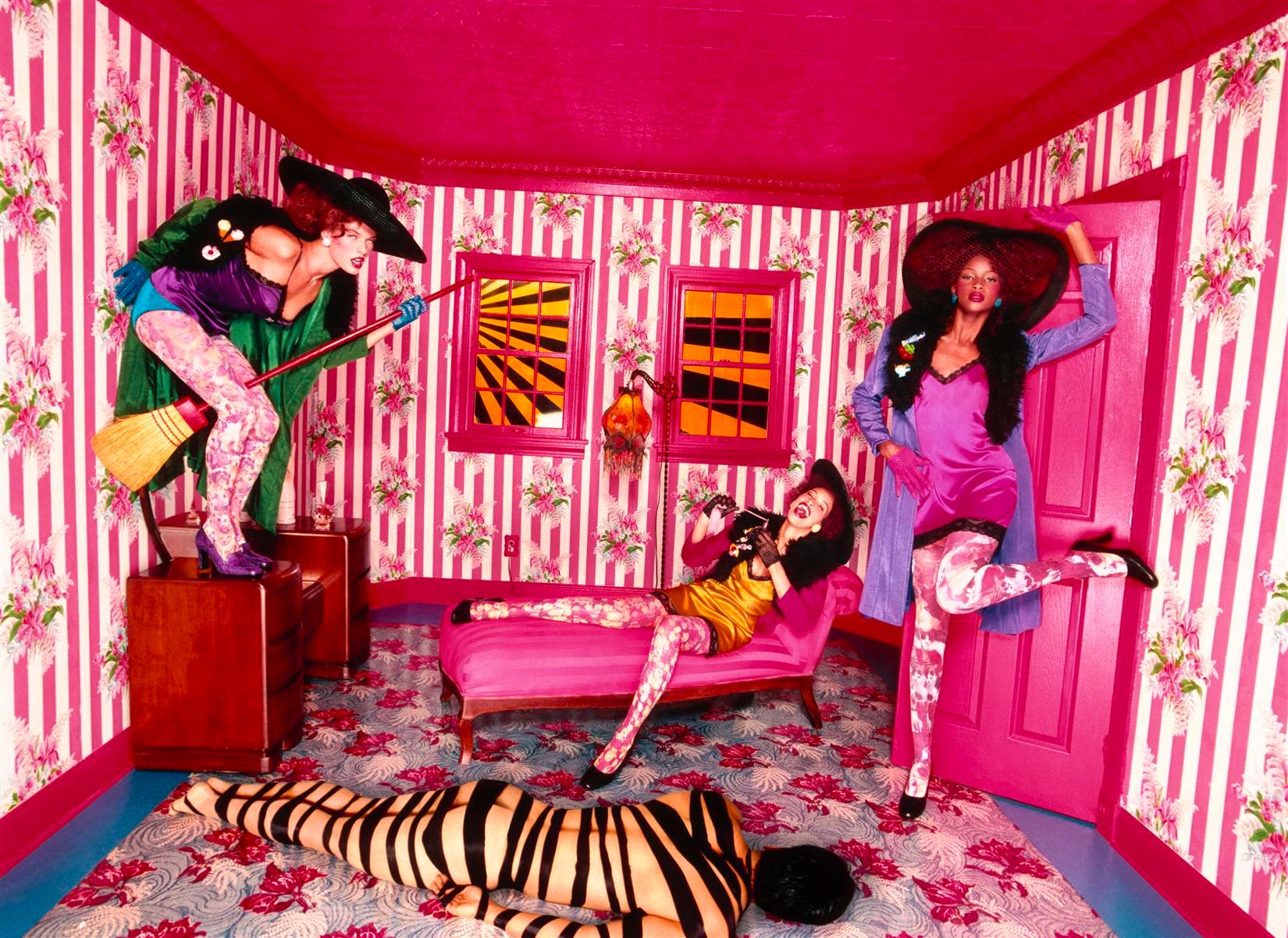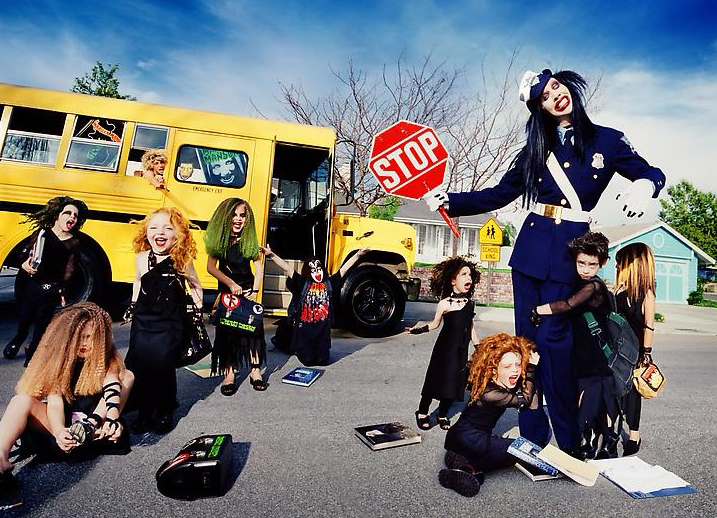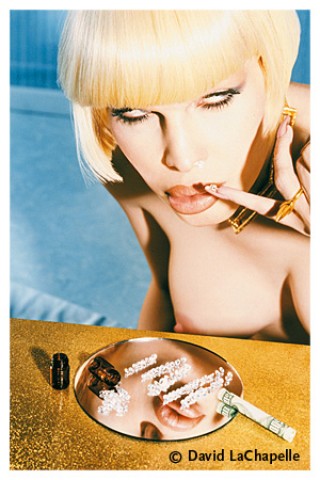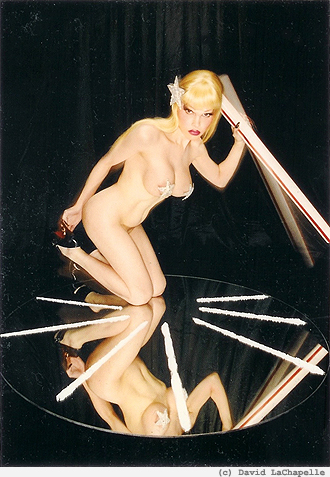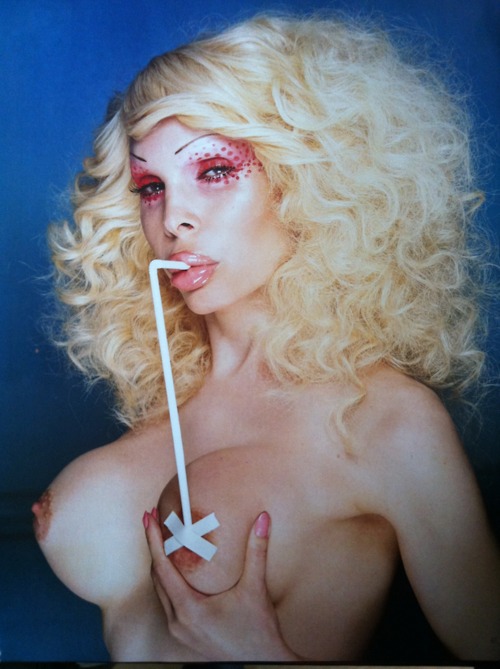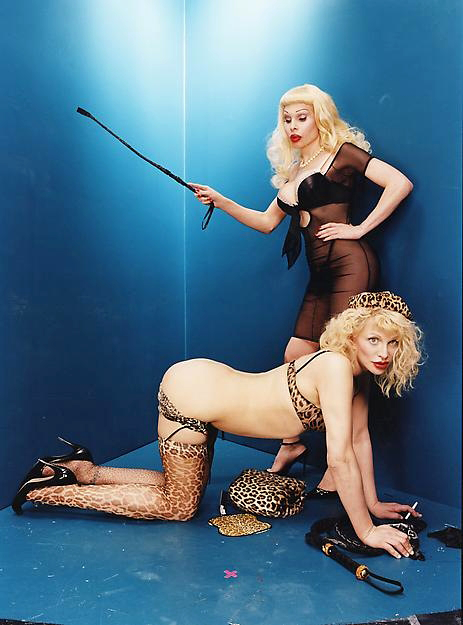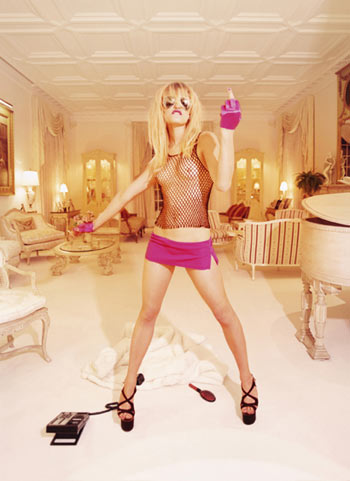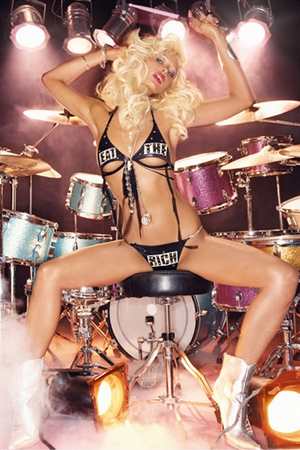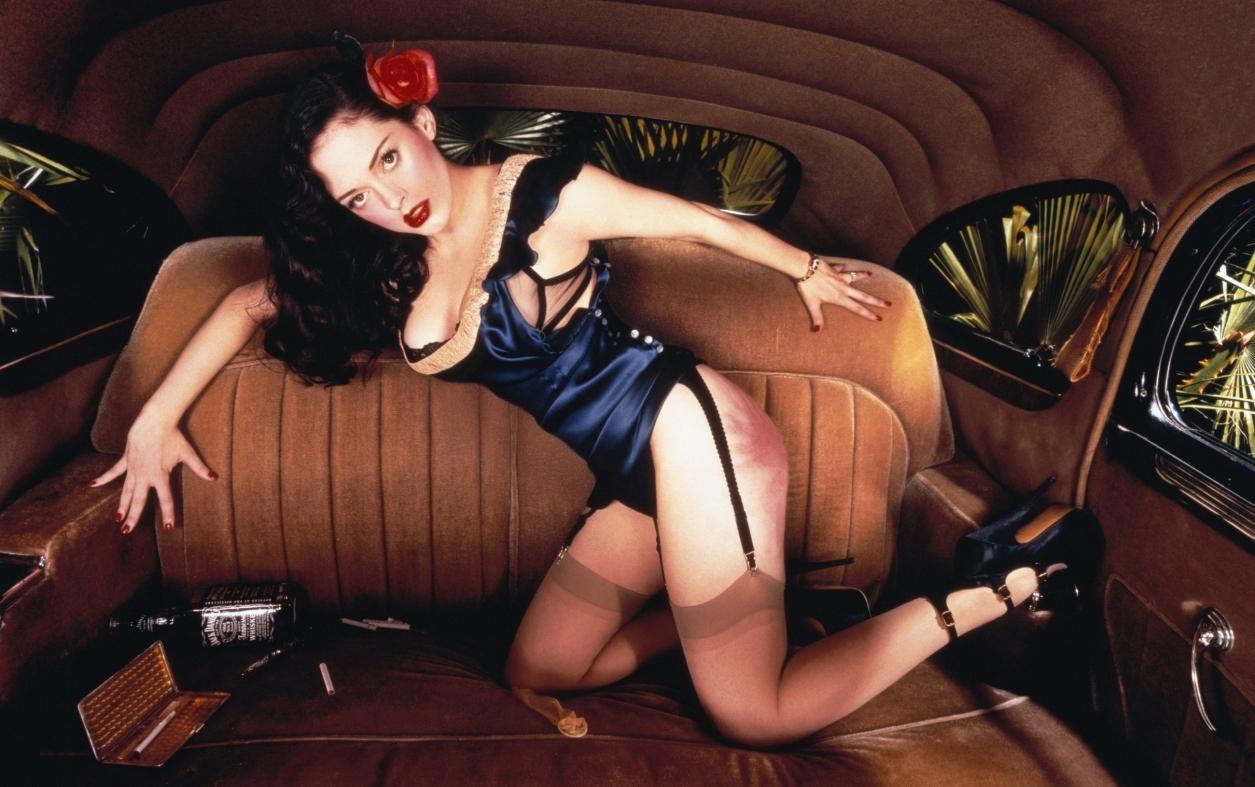Fame, what you like is in the limo
Fame, what you get is no tomorrow
Fame, what you need you have to borrow
Fame
David Bowie, Fame
How does it feel to be
One of the beautiful people?
How often have you been there?
Often enough to know.
What did you see, when you were there?
Nothing that doesn’t show.
The Beatles, Baby You’re a Rich Man
The beautiful people, the beautiful people
Marilyn Manson
I always thought I’d like my own tombstone to be blank. No epitaph, and no name. Well, actually, I’d like it to say “figment.”
Andy Warhol
Surrealism is psychic automatism in its pure state, by which one proposes to express — verbally, by means of the written word, or in any other manner — the actual functioning of thought.
Surrealist Manifesto, 1924
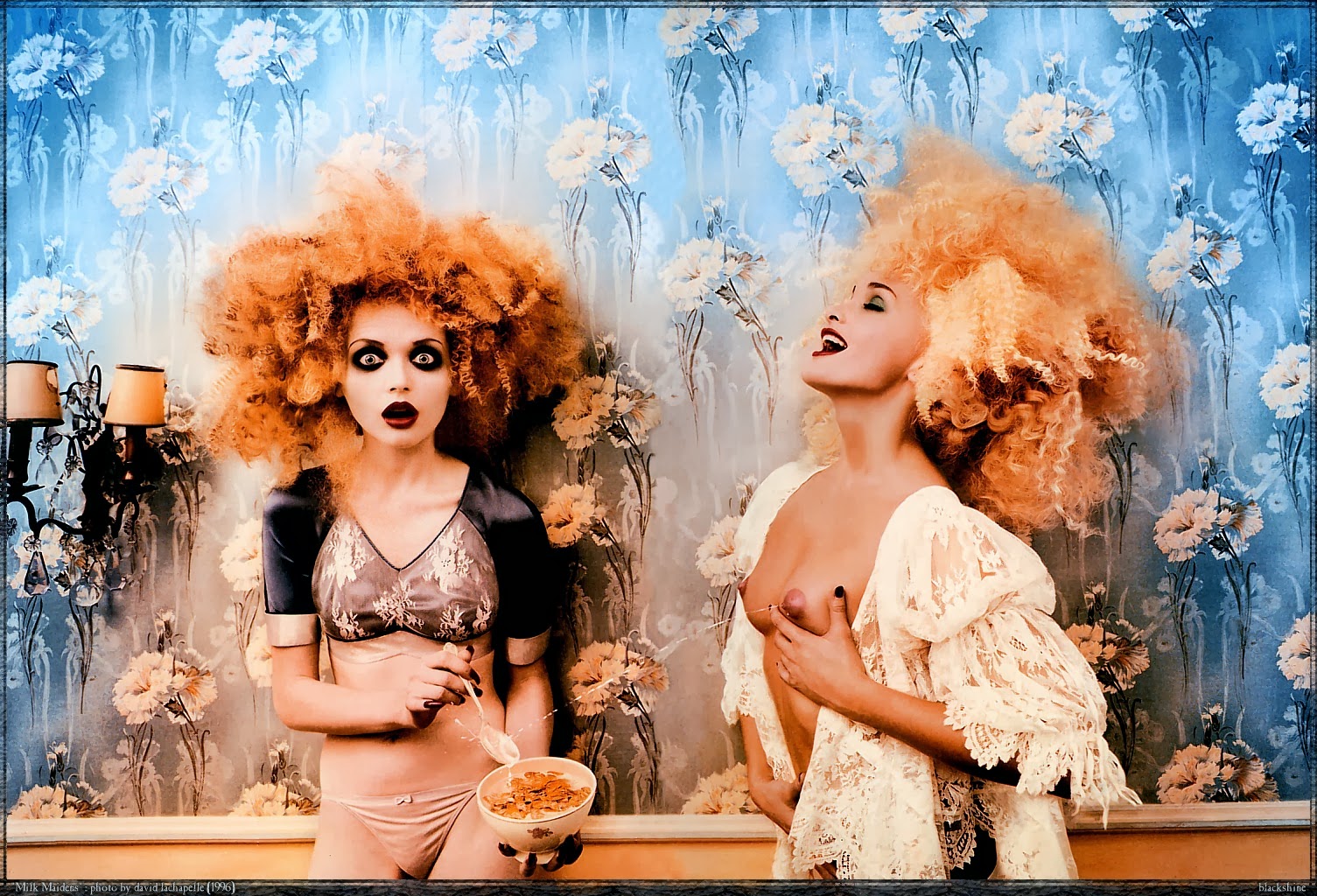 In the official world of art, Pop Surrealism is often considered nothing more than a jambalaya of dollies, skulls, pinups and trendy sub-cultural whatnot.
In the official world of art, Pop Surrealism is often considered nothing more than a jambalaya of dollies, skulls, pinups and trendy sub-cultural whatnot.
But here we want to start with words, and with the history behind them. Together with Dada, Surrealism and Pop Art are definitely the key artistic movements for the aesthetics and poetics of the contemporary culture. Pop Art examines in depth the sex-appeal of inorganic, the commodity orgasm, the fifteen minutes glory and the following death. 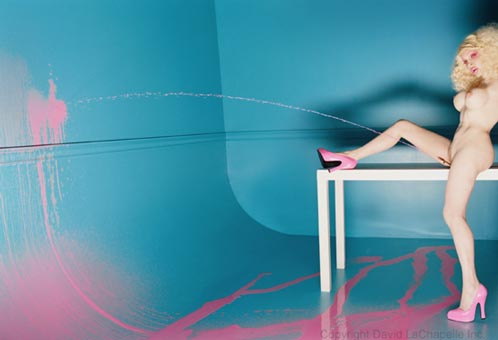
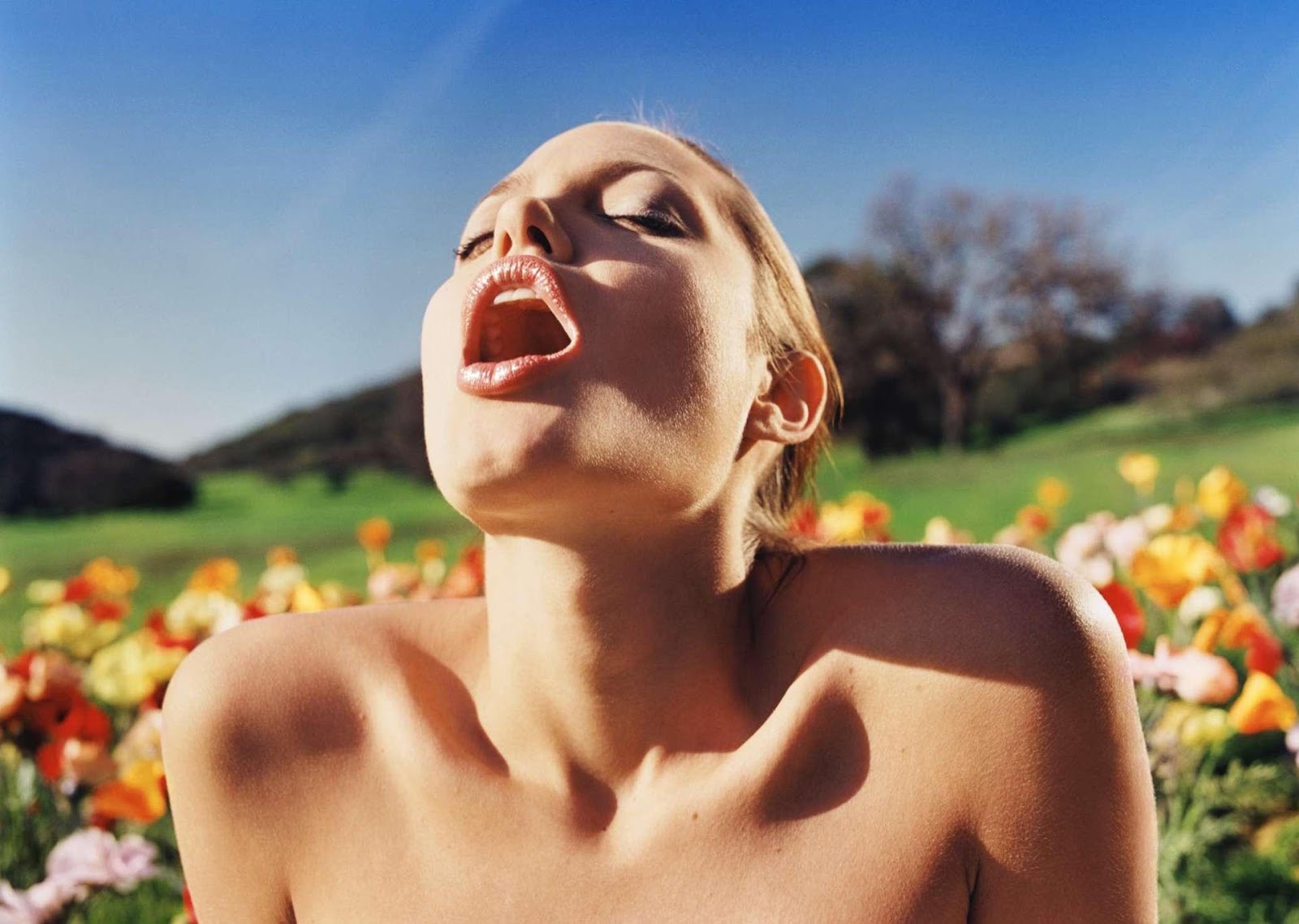 The Surrealism core, beyond the superficial heritage of oneiric settings, is about an implacable search for truth. A search which is transversal, cryptic, done with the instruments of irony, chaos and mistake, but, nevertheless, implacable.
The Surrealism core, beyond the superficial heritage of oneiric settings, is about an implacable search for truth. A search which is transversal, cryptic, done with the instruments of irony, chaos and mistake, but, nevertheless, implacable.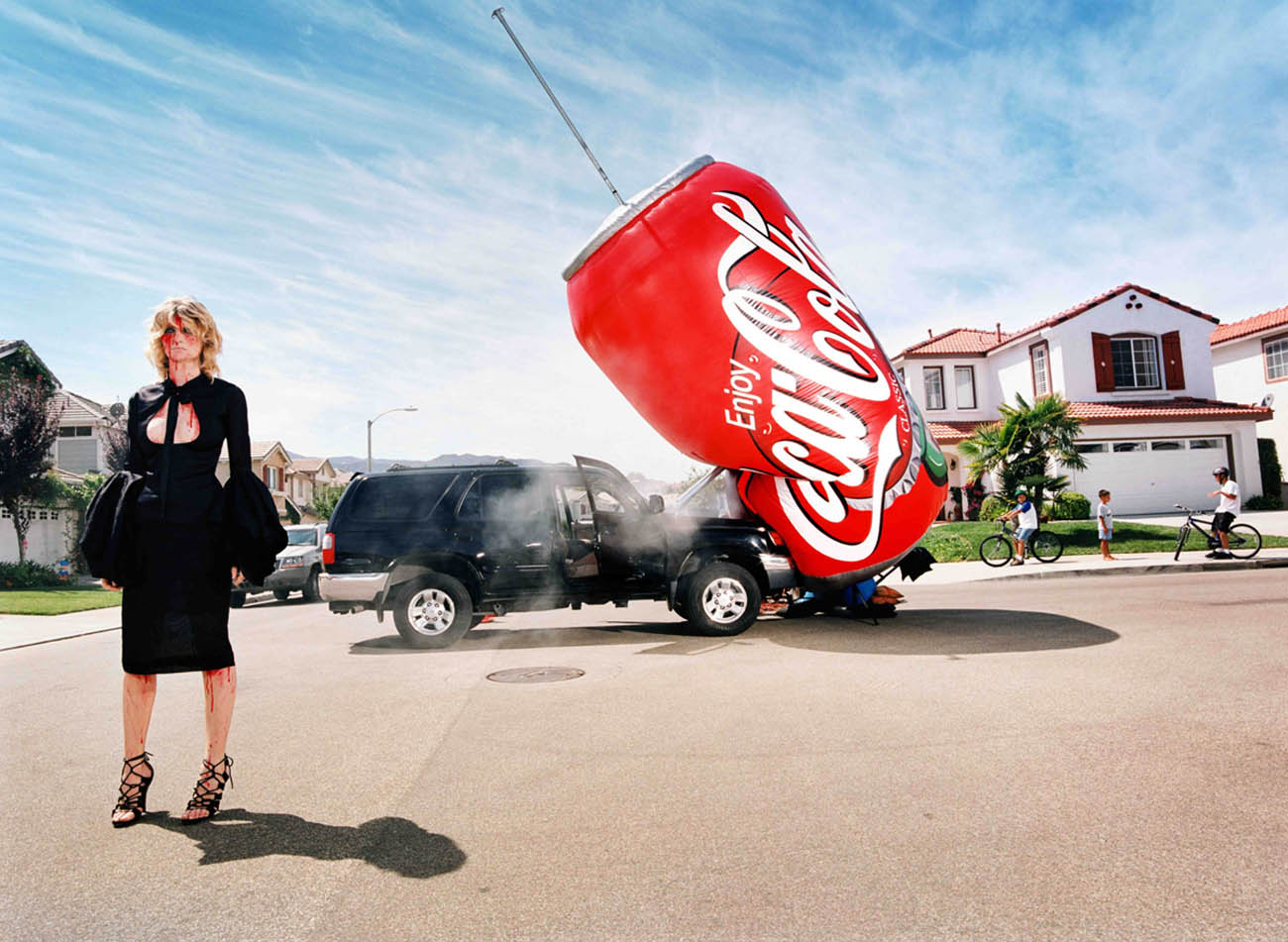 So, let’s talk about David LaChapelle. Because we suspect that there is no one more Pop-Surrealist than him.
So, let’s talk about David LaChapelle. Because we suspect that there is no one more Pop-Surrealist than him.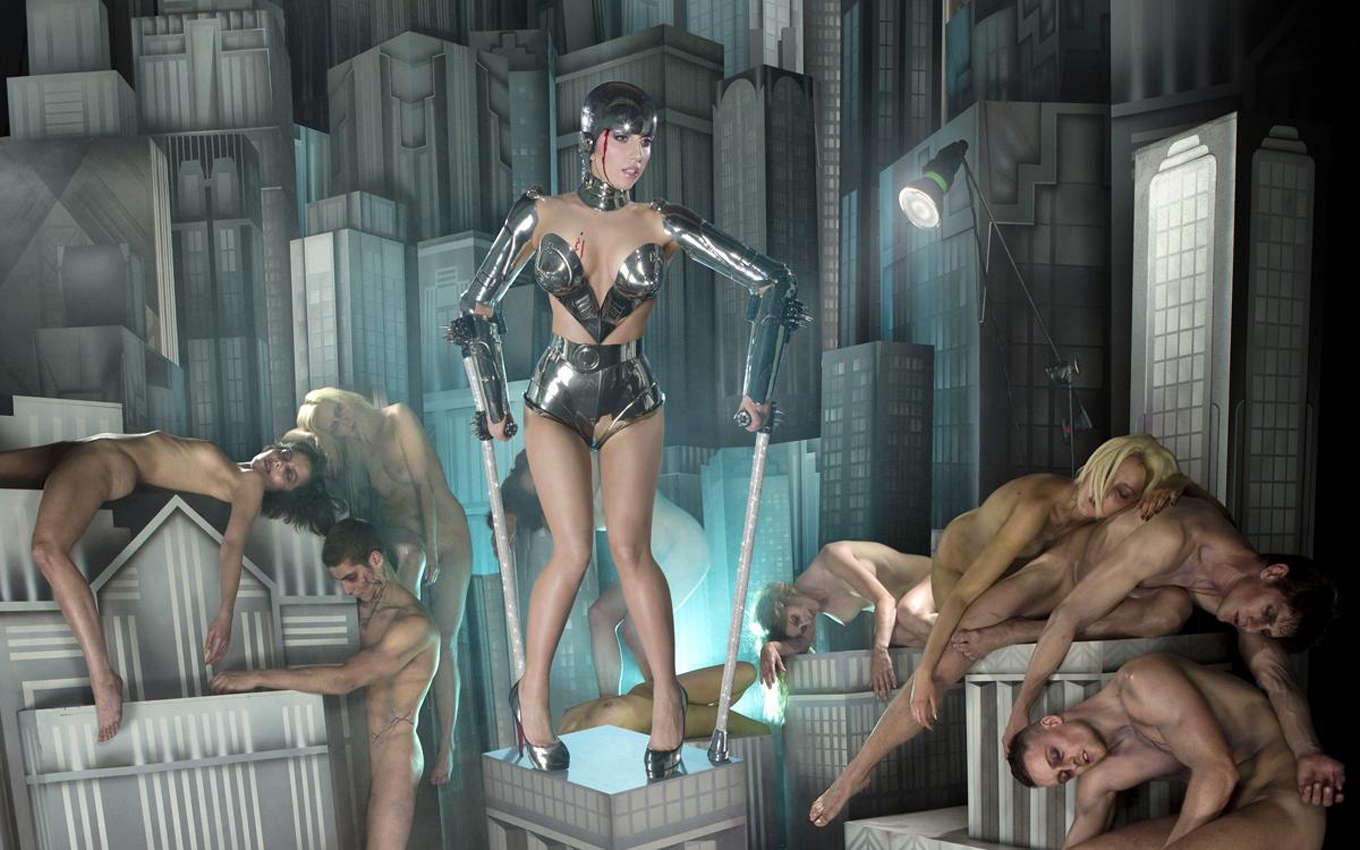 We are fine with the axiom about the search for truth: David LaChapelle shows what is hidden by the veil of appearances. He amplifies what is usually just hinted, especially about the golden world of stars, fashion models, glamorous icons.
We are fine with the axiom about the search for truth: David LaChapelle shows what is hidden by the veil of appearances. He amplifies what is usually just hinted, especially about the golden world of stars, fashion models, glamorous icons.
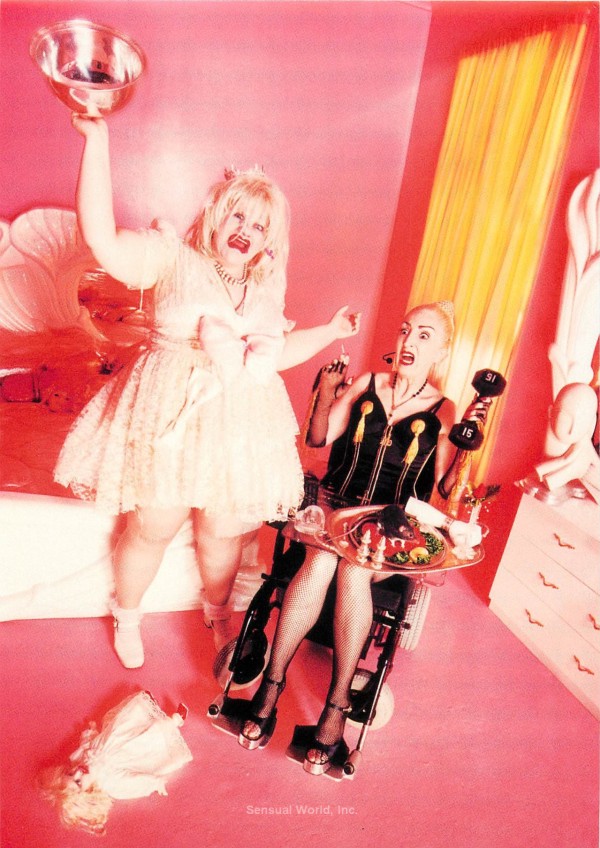 And also about the fake respectability of the American working-class, as we can see in the series Drunk Americans. Next-door families show themselves completely pissed, with grandmas puking in the garbage can, people feeding puppies with beer, fathers lacing baby’s bottles with chocolate liqueur Kahlua and head-over-heels mothers, under rains of whisky.
And also about the fake respectability of the American working-class, as we can see in the series Drunk Americans. Next-door families show themselves completely pissed, with grandmas puking in the garbage can, people feeding puppies with beer, fathers lacing baby’s bottles with chocolate liqueur Kahlua and head-over-heels mothers, under rains of whisky.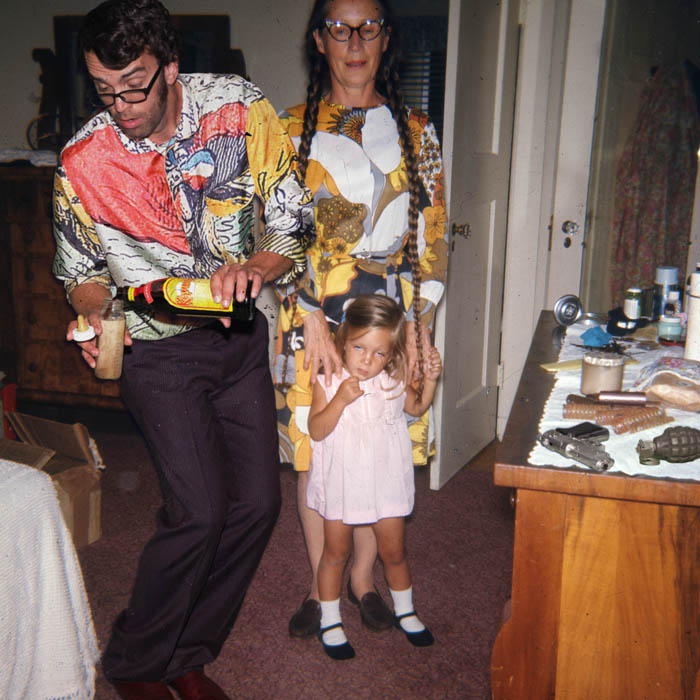
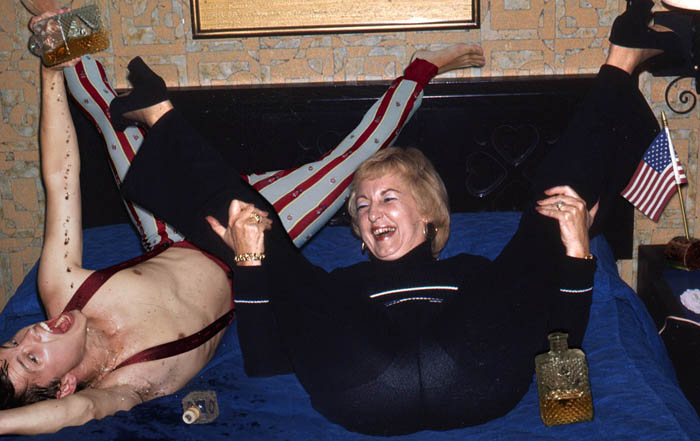 “Beautiful as the chance meeting of a sewing-machine and an umbrella on a dissecting-table”, said the Surrealists’ idol Lautréamont. Transferring this sentence to David LaChapelle, we should say “beautiful as a model care-worker wheeling a plastered freak on a wheelchair under the Sphynx”. “Beautiful as the meeting of a Hollywood star and her chromium-plated dildos on a dissecting-table”.
“Beautiful as the chance meeting of a sewing-machine and an umbrella on a dissecting-table”, said the Surrealists’ idol Lautréamont. Transferring this sentence to David LaChapelle, we should say “beautiful as a model care-worker wheeling a plastered freak on a wheelchair under the Sphynx”. “Beautiful as the meeting of a Hollywood star and her chromium-plated dildos on a dissecting-table”.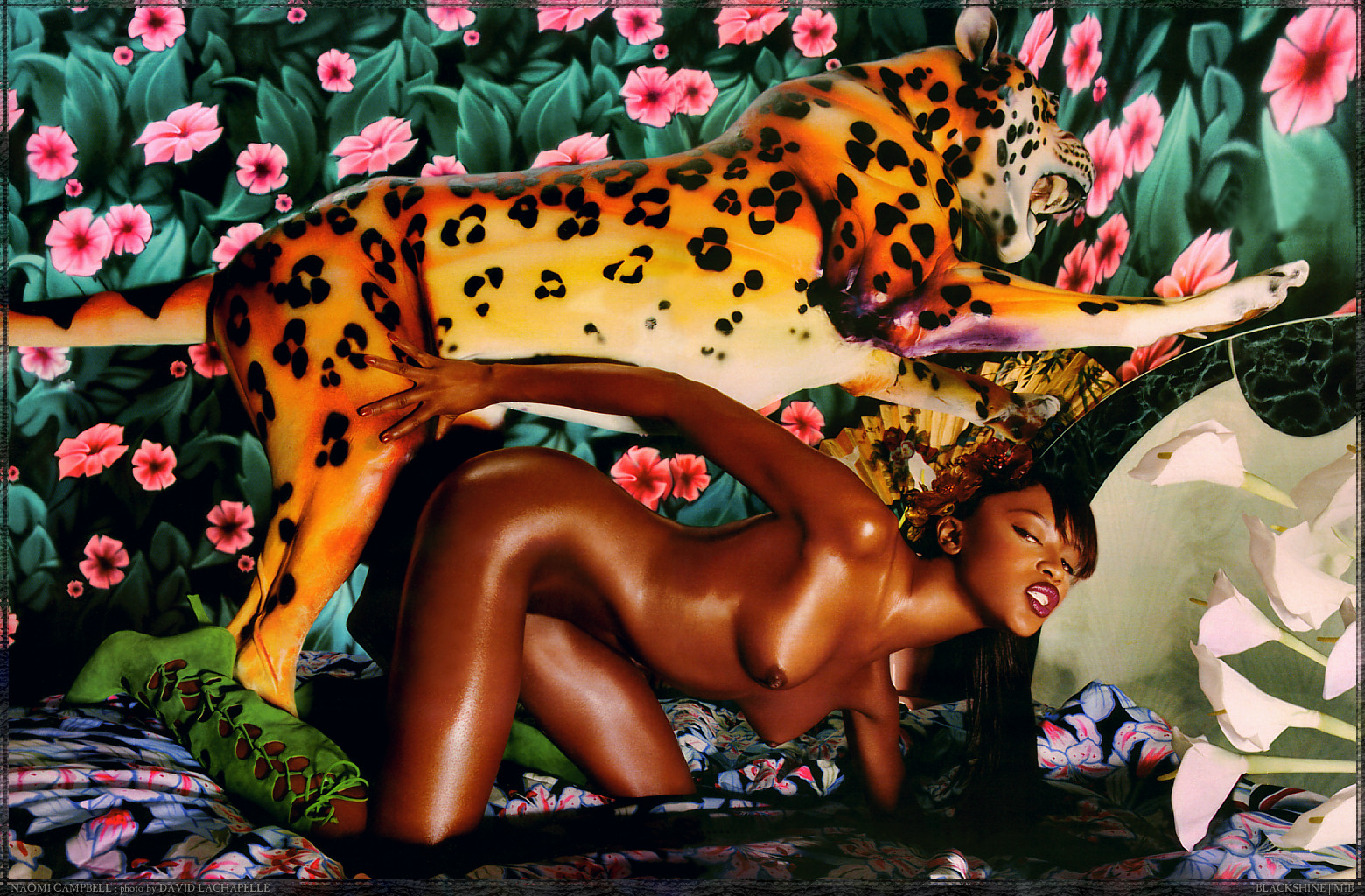
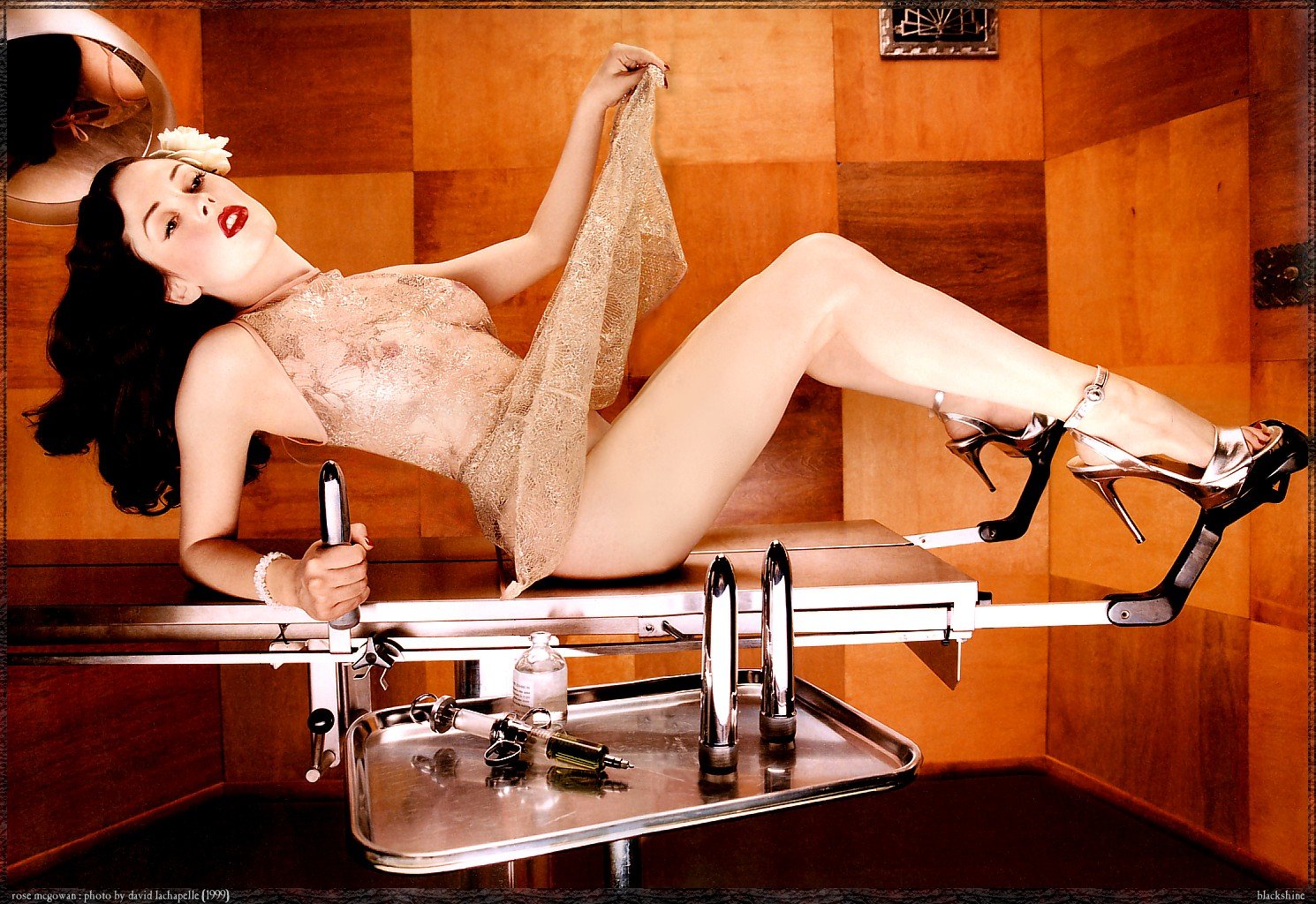 One of the epistemological dogmas of Surrealism is paradox: LaChapelle tries to focalize reality through everything that is artificial, from the sparkle of plastic, to the fake diamonds of kitsch, till the ephemeral galaxy of fame.
One of the epistemological dogmas of Surrealism is paradox: LaChapelle tries to focalize reality through everything that is artificial, from the sparkle of plastic, to the fake diamonds of kitsch, till the ephemeral galaxy of fame.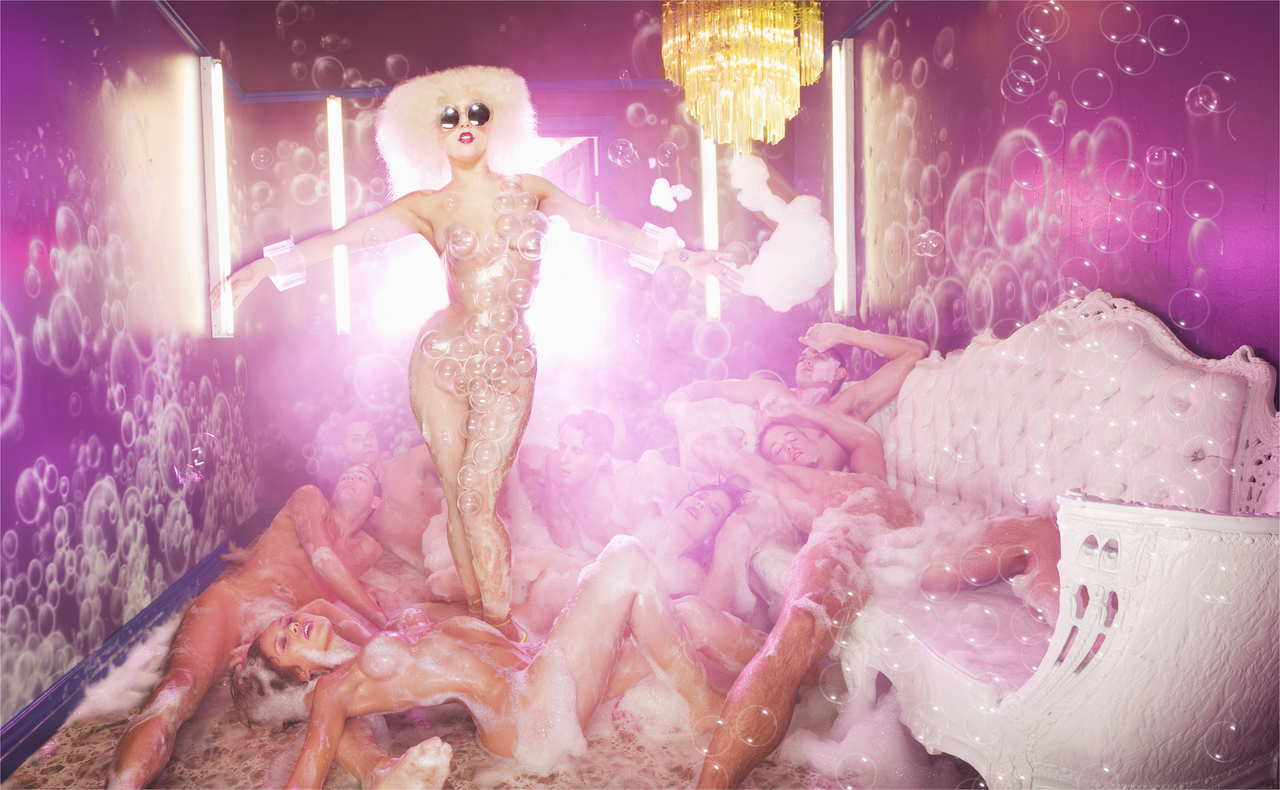 Eroticism is a very strong component of LaChapelle’s work, just like in the research of Breton & Co., but this theme is so rich and marvelous that it would deserve an article on its own.
Eroticism is a very strong component of LaChapelle’s work, just like in the research of Breton & Co., but this theme is so rich and marvelous that it would deserve an article on its own. 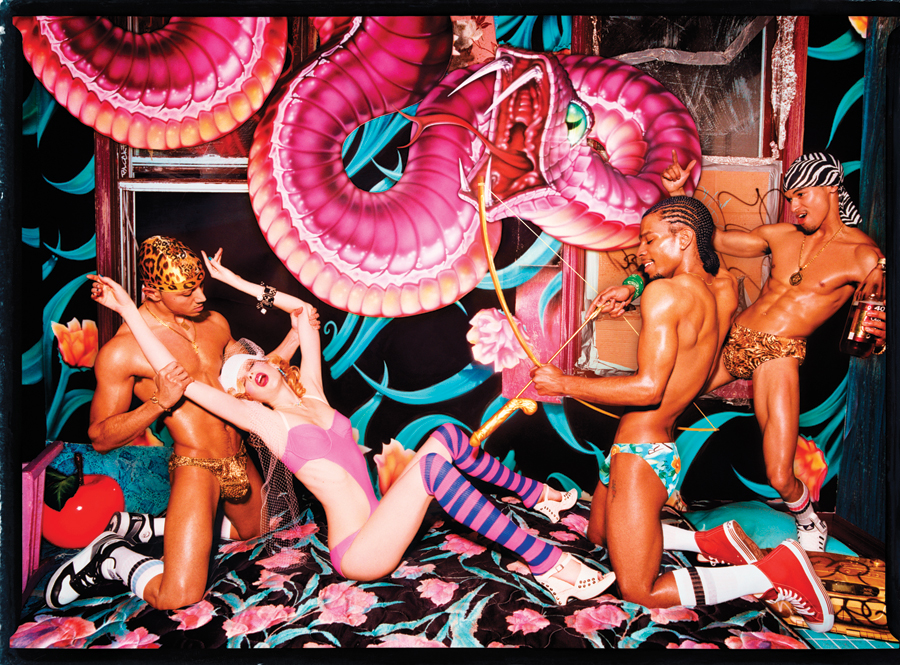
Now, let’s consider the Pop side. In the work of LaChapelle, we can see huge satellites Coke-can-shaped, impacting into SUV of miracle-shopping-women, a Ronald McDonald in panties waiting to make out with Pamela Anderson, plastic bags full of empty bottles of Gatorade and Nestea, Sony camcorders, Adidas T-shirts among the disciples of the home-boy Jesus Christ.
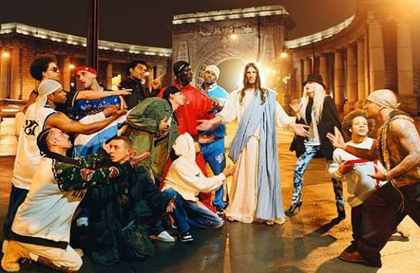
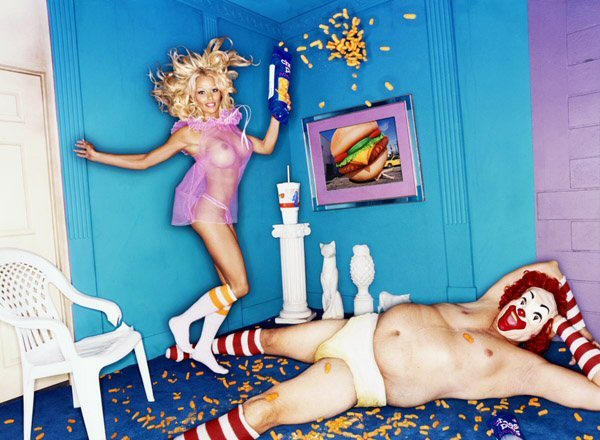 The big brands cannot be missing in the Pop-work of an Andy Warhol’s disciple, but the consumer goods on which the attention of LaChapelle is most focused are the stars.
The big brands cannot be missing in the Pop-work of an Andy Warhol’s disciple, but the consumer goods on which the attention of LaChapelle is most focused are the stars.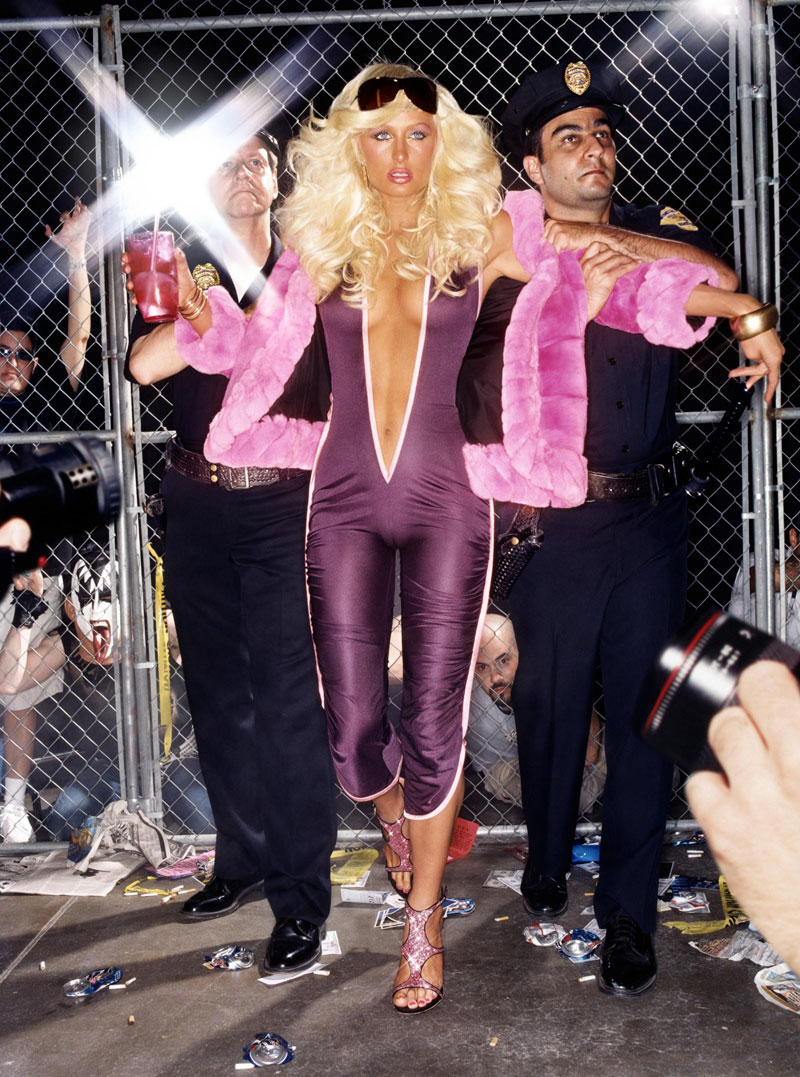 Stardom is represented as a world on its own, ontologically sur-realistic, and every member of it transmits a different code about how the divine life should be. Or rather, how his/her life is, the life built through reality and fiction gravitating around his/her character.
Stardom is represented as a world on its own, ontologically sur-realistic, and every member of it transmits a different code about how the divine life should be. Or rather, how his/her life is, the life built through reality and fiction gravitating around his/her character.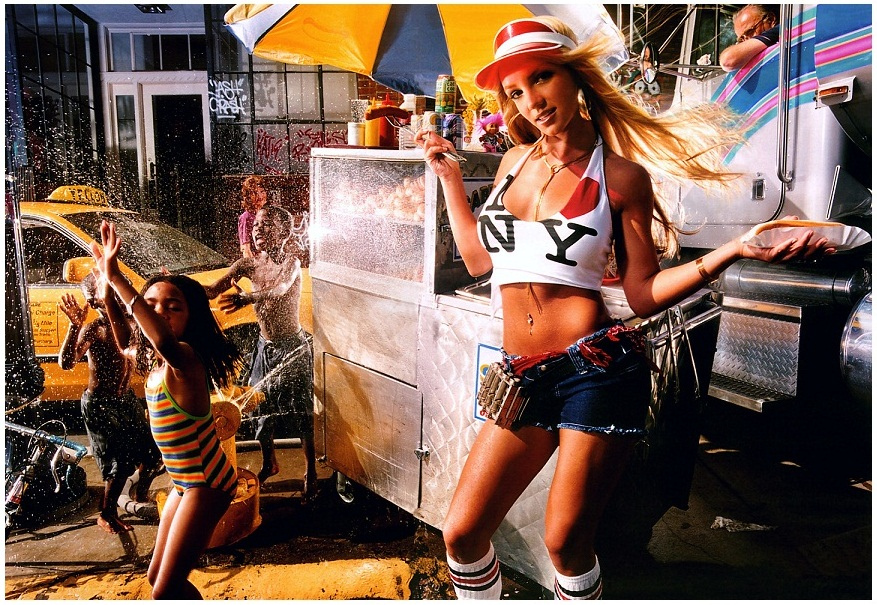 That’s the same thing happening in music videos, in which each singer tries to represent his/her idea of coolness and success.
That’s the same thing happening in music videos, in which each singer tries to represent his/her idea of coolness and success. 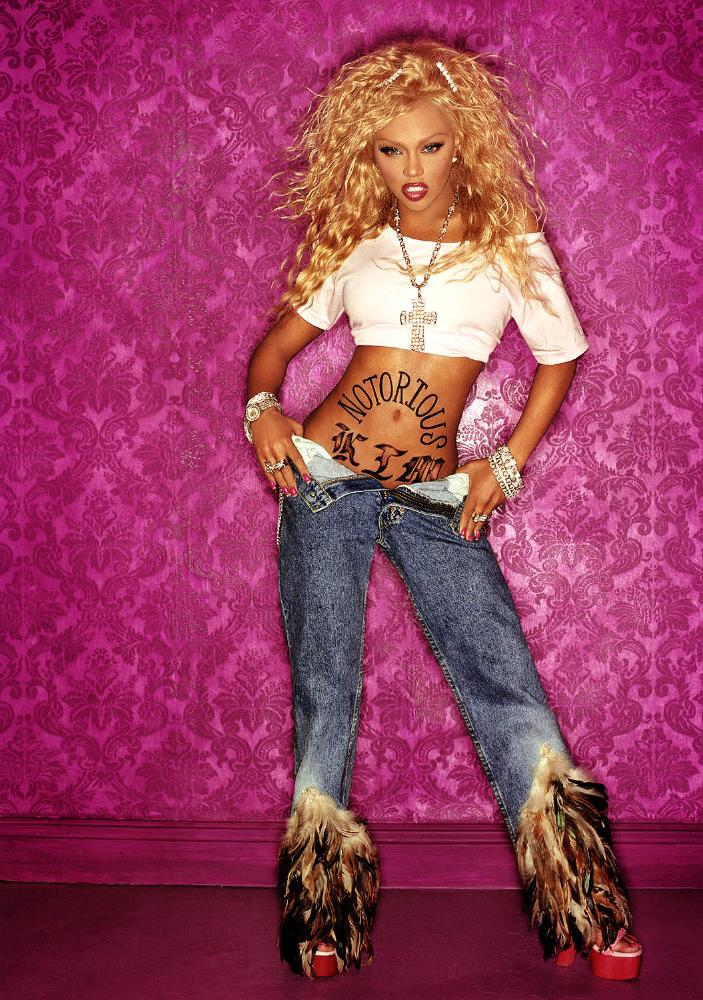
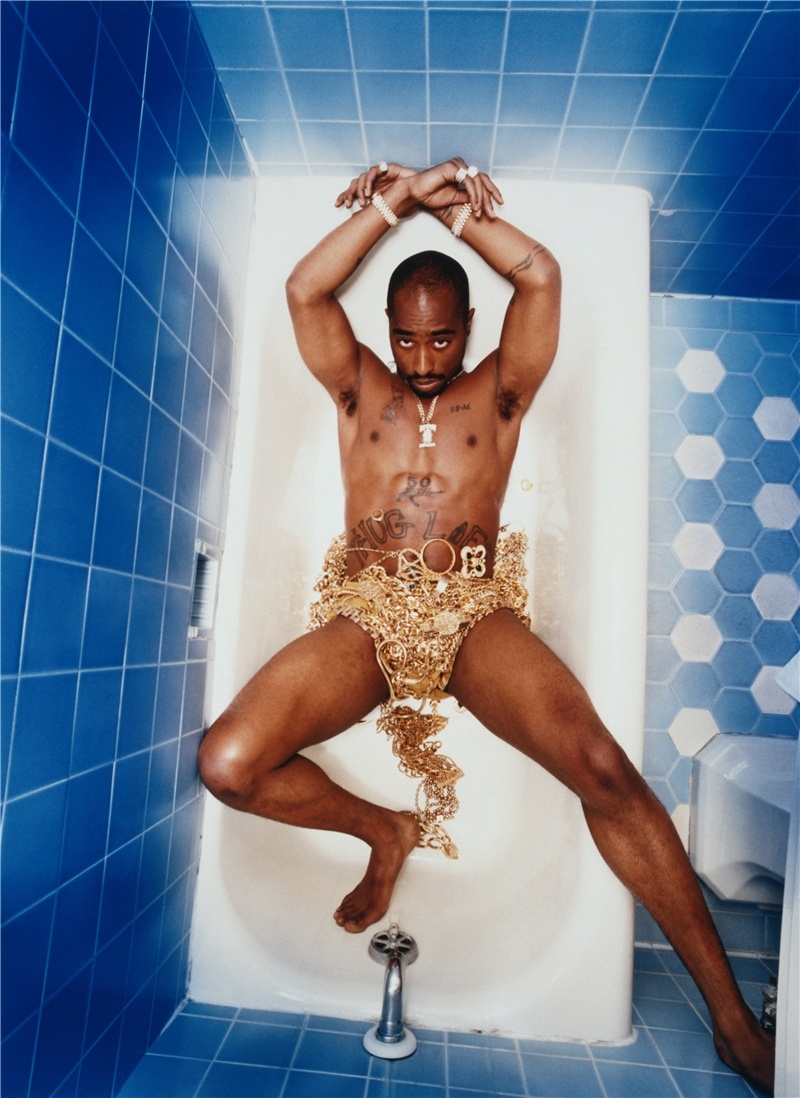
We can display only a very little samples of the over two-hundred show-biz icons depicted by LaChapelle.
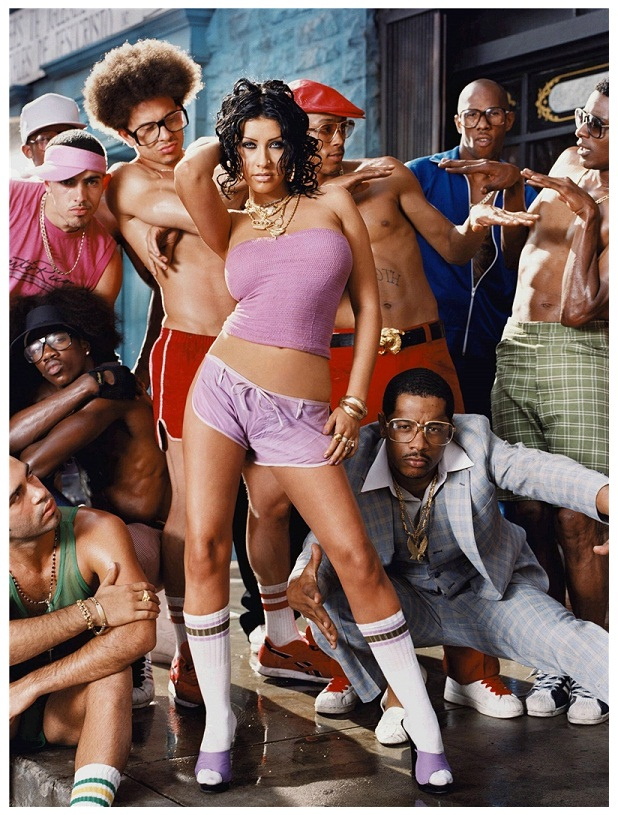
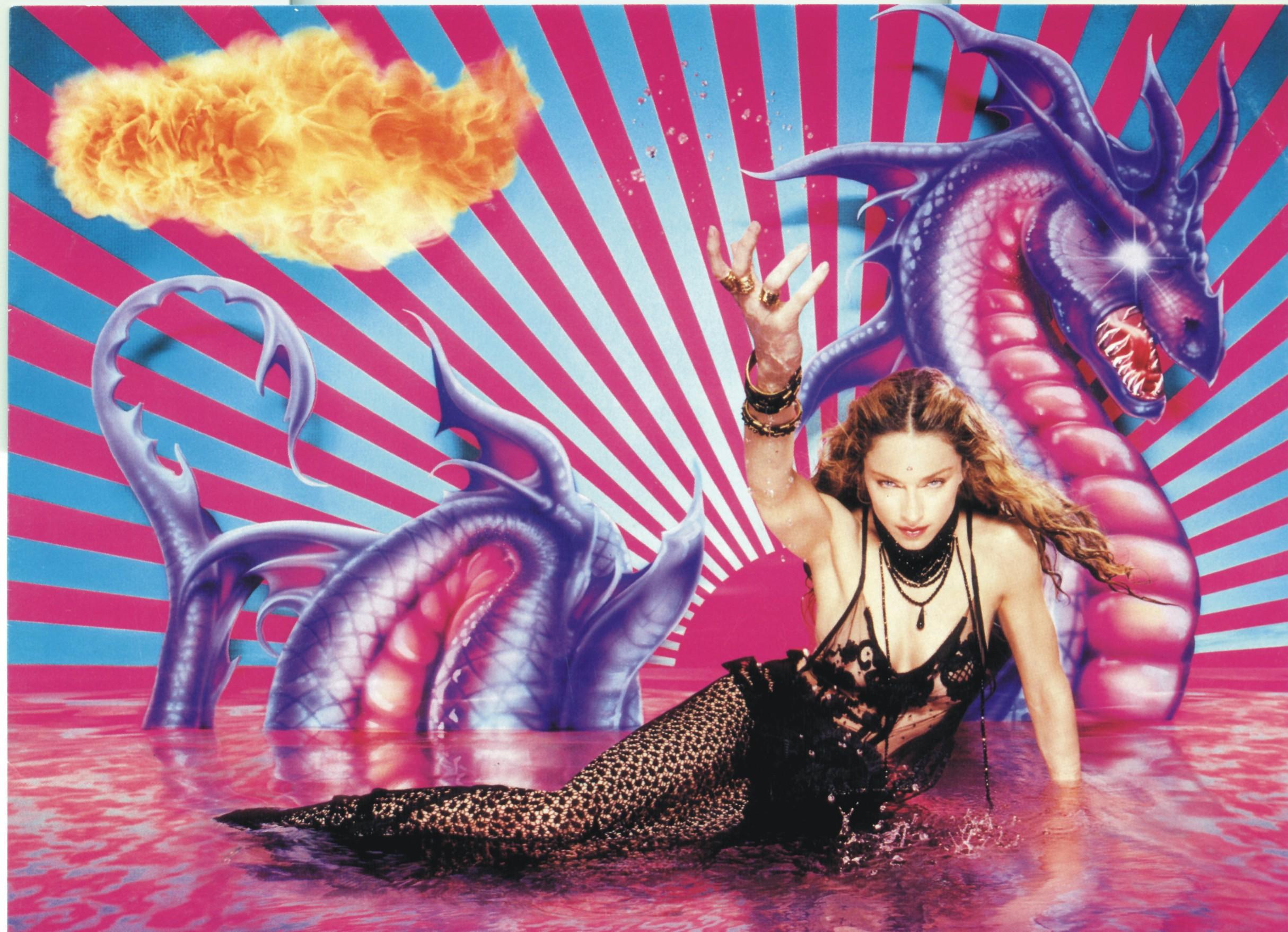 We can start from the bionic bunny-girl (playmate) Pamela Anderson, stereotype of the Californian pleasure-doll.
We can start from the bionic bunny-girl (playmate) Pamela Anderson, stereotype of the Californian pleasure-doll. 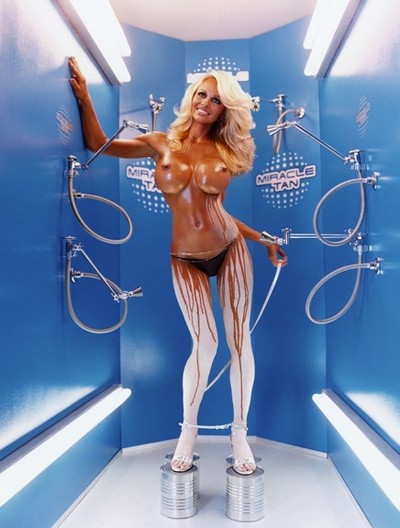
Pamela obtains her Bay-watch tan in the miraculous-tan machine, which sprinkles the golden brown tan directly on her body through shower airbrushes. Lady Godiva on running motorcycles, she is often surrounded by the horny object-glasses of the photographers.
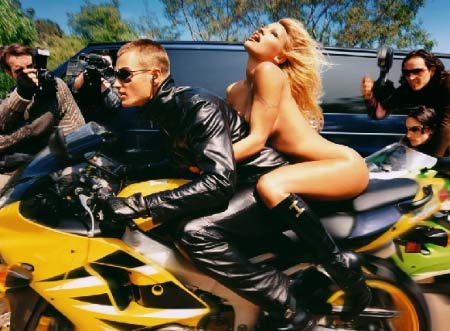
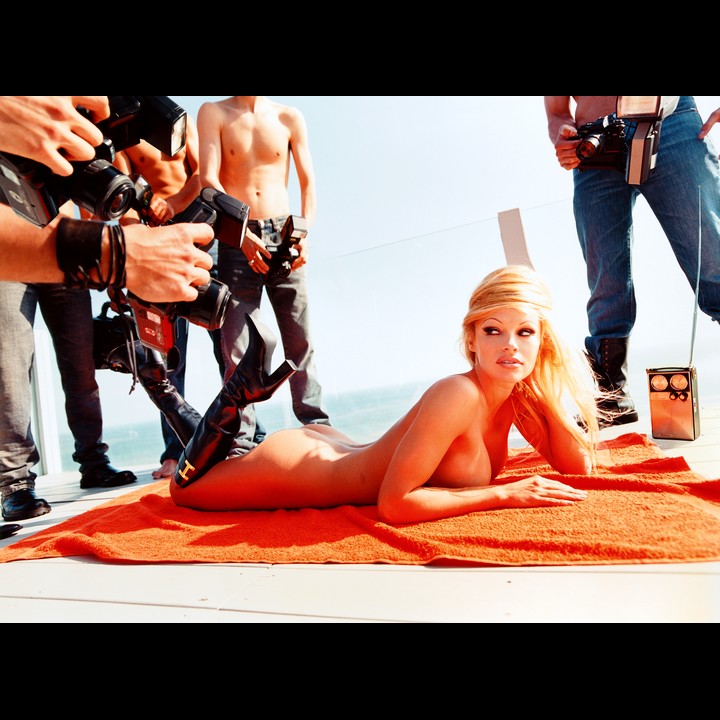 In one of her most well-made portraits, Pamela is attacked by her worst nightmare, which is her double, after the transformation in a fat pink piggy.
In one of her most well-made portraits, Pamela is attacked by her worst nightmare, which is her double, after the transformation in a fat pink piggy.
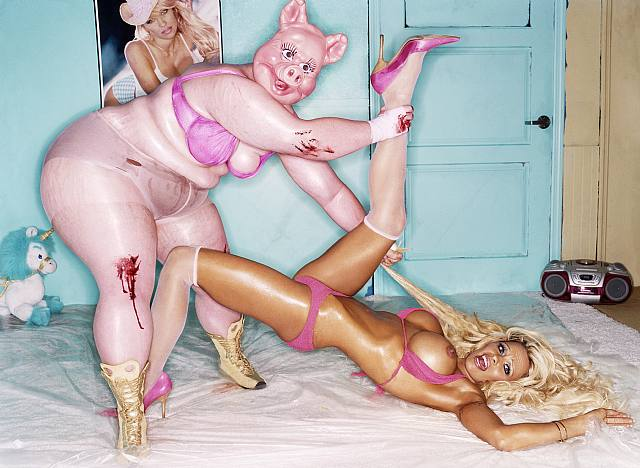
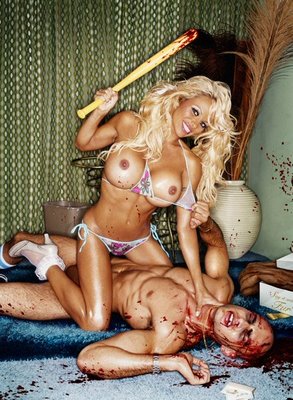 Pamela takes her revenge butchering the unfortunate Goldie with a baseball bat, displaying in the meantime her Barbie-Girl smile and boobs as big as her head.
Pamela takes her revenge butchering the unfortunate Goldie with a baseball bat, displaying in the meantime her Barbie-Girl smile and boobs as big as her head.
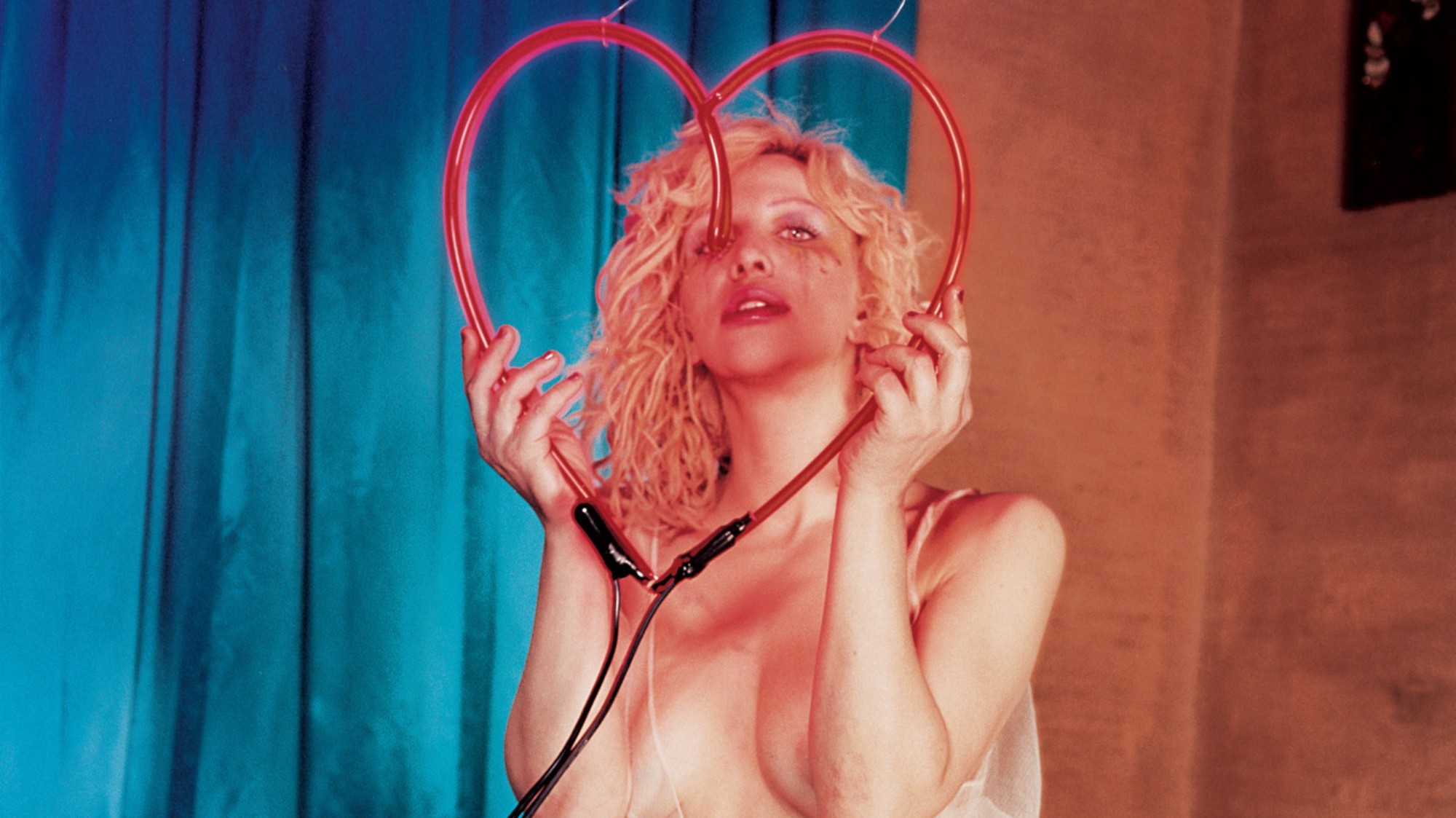 We have also the tragic beauty-queen of abuses and of the myth of success at any cost, Miss World Courtney Love. Beaten, with a wasted make-up and bruises on her body, she roams in destructed factories invaded by dirt, or she kids around with the heart of the Hole in third category motel rooms. Her parabolic rises and falls are perfectly represented in the Pietà on the cover of Heaven to Hell. The setting is inside a little room illuminated by glitters and a warm haloed light, among small tables full of candles, cough mixture and Champagne bottles, and we can see Courtney Love, already slave to plastic surgery, carrying in her arms the gaunt body of a copycat of Kurt Cobain, whose stigmata are the heroin holes.
We have also the tragic beauty-queen of abuses and of the myth of success at any cost, Miss World Courtney Love. Beaten, with a wasted make-up and bruises on her body, she roams in destructed factories invaded by dirt, or she kids around with the heart of the Hole in third category motel rooms. Her parabolic rises and falls are perfectly represented in the Pietà on the cover of Heaven to Hell. The setting is inside a little room illuminated by glitters and a warm haloed light, among small tables full of candles, cough mixture and Champagne bottles, and we can see Courtney Love, already slave to plastic surgery, carrying in her arms the gaunt body of a copycat of Kurt Cobain, whose stigmata are the heroin holes. 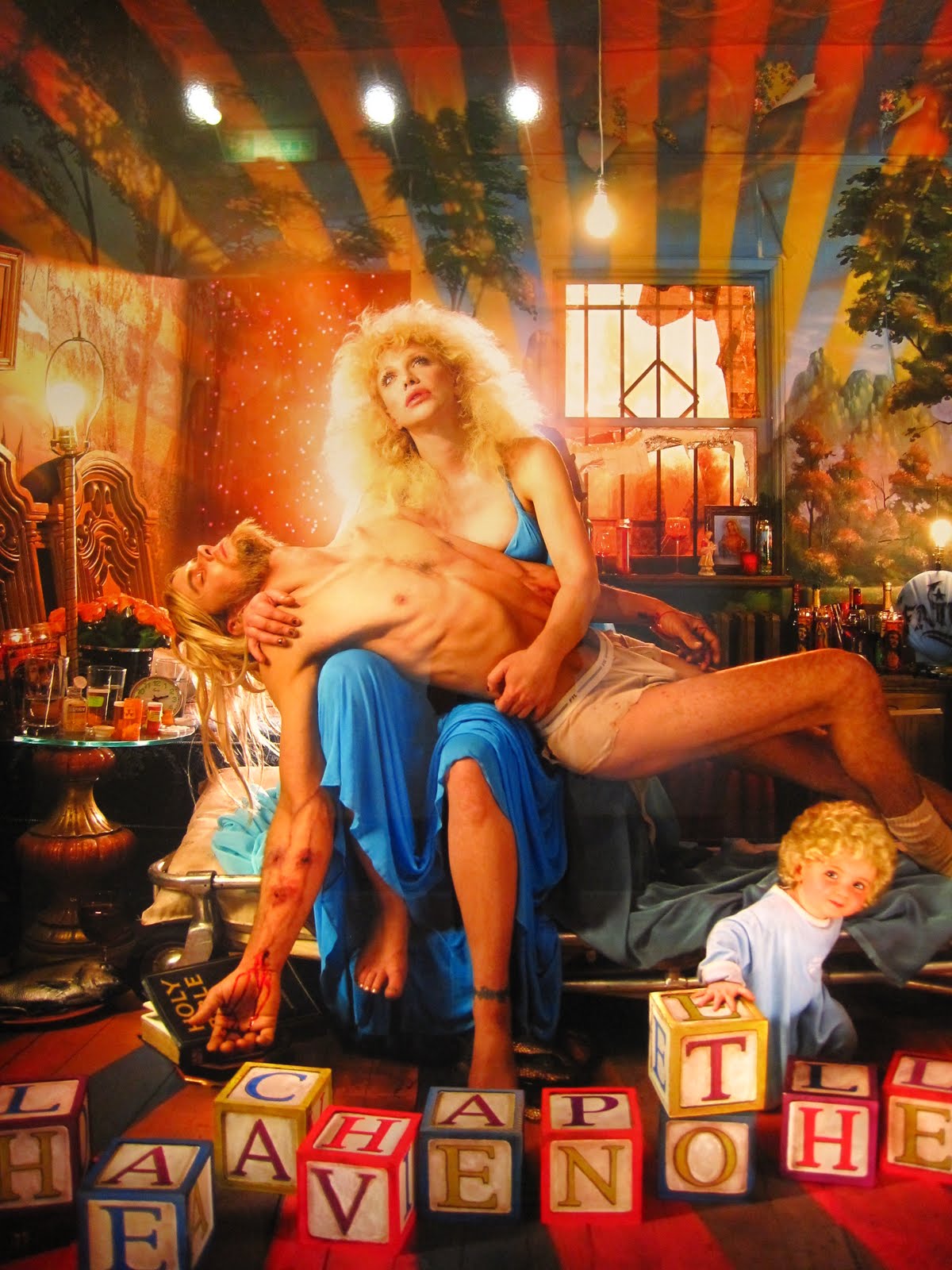
Amanda Lepore, the silicon muse of David LaChapelle, was a very precocious transsexual and one of the mythical party monster of the New York club-scene in the Nineties. Without age, lacking restraint, Amanda inhales toots of diamonds. She prepares half-meter-long lines of cocaine, and she transforms herself into the Andy Warhol’s Marilyn Monroe or Elizabeth Taylor icons.
Amanda quotes The Metamorphosis of Kafka: a tattooer with a bio-mechanical insect tattooed on her back stimulates Amanda between her legs with an electric dildo.
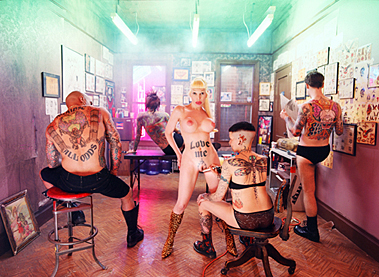 Amanda sucks the milk from her plastic nipples with a straw, and she makes love squirting a pink heart on a baby-blue wall. Finally, she scourges the naked bum of Courtney, maybe to punish her for not having mixed the cheetah patterns of her underwear in a homogenous way.
Amanda sucks the milk from her plastic nipples with a straw, and she makes love squirting a pink heart on a baby-blue wall. Finally, she scourges the naked bum of Courtney, maybe to punish her for not having mixed the cheetah patterns of her underwear in a homogenous way.
Paris Hilton, the most dirty-sex-rich heiress of these years, shows her middle finger to everybody from her grandma’s hotel suite. Then she displays her transgressive rock ‘n’ roll attitude opening up her legs on the stool of a glittering drum kit, wearing a micro-kini with the writing “Eat the Rich”. Then she’s satisfied with swallowing a big pink Popsickle, while remembering maybe her virtuous film One Night in Paris. 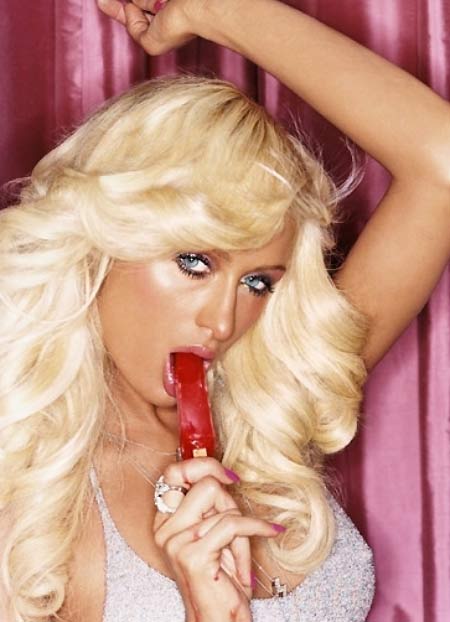
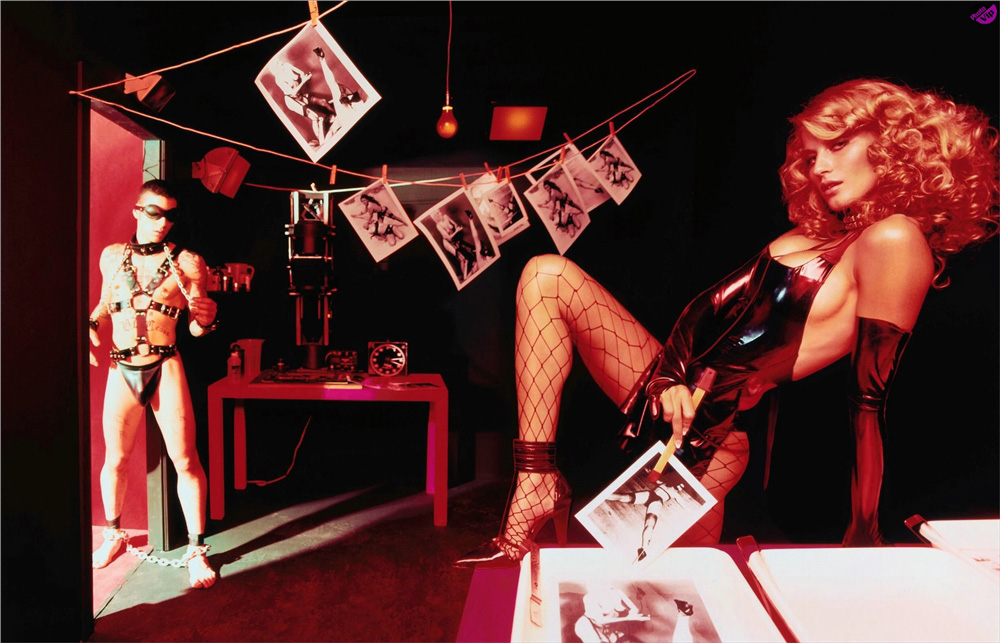 Gisele Bundchen shows fashion-system’s perversions developing fetish photos with the help of a body-built slave, in déshabillé inside a room full of fat girls watching her, disguised as a police-woman armed with a billy club, who is going to body-search deeply a group of muscular jail-birds. Through the perspective of David LaChapelle, Gisele is good at giving emotions also in the bored housewife’s shoes.
Gisele Bundchen shows fashion-system’s perversions developing fetish photos with the help of a body-built slave, in déshabillé inside a room full of fat girls watching her, disguised as a police-woman armed with a billy club, who is going to body-search deeply a group of muscular jail-birds. Through the perspective of David LaChapelle, Gisele is good at giving emotions also in the bored housewife’s shoes. 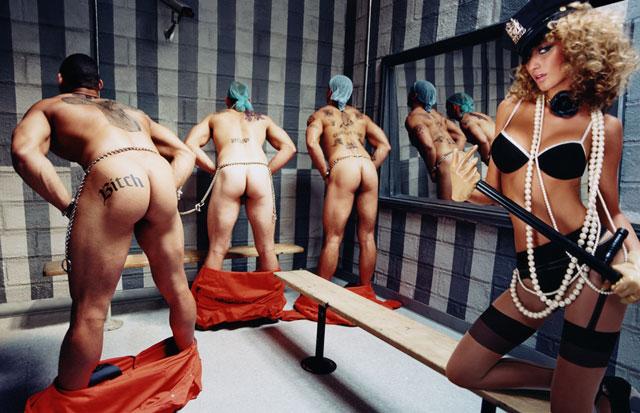
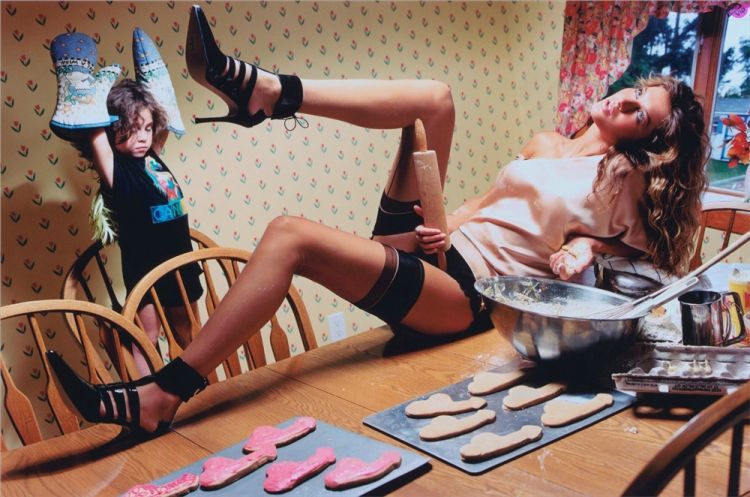
LaChapelle works also frequently on the iconography of the anonymous fashion-model, who is transformed into a piece of meat on the supermarket’s scaffolds, or into a dummy among numbered plastic torsos. The models are depicted collapsed into tsunami settings, while they walk across jungles populated by dinosaurs, eating pieces of raw and hypo-caloric meat with chopsticks, drifting into futuristic horizons.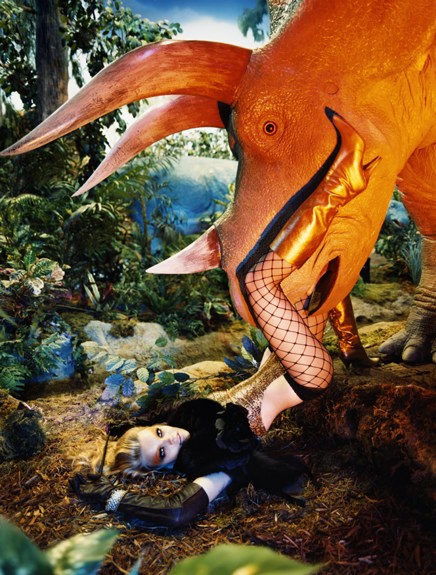
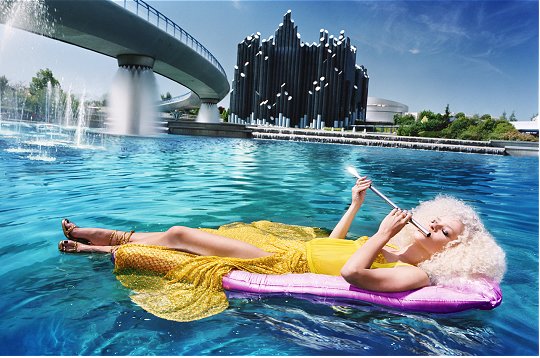 LaChapelle has an unparalleled ability to catch the essence of all archetypes embodied by famous people, mixing gossip and myth, reality and fiction, desire and danger. This research on the beautiful people’s fifteen minutes of fame, the intuition about how fame builds a surreal dimension, the awareness of the real nature of imaginary are the features which connotes David LaChapelle as a Pop Surrealist.
LaChapelle has an unparalleled ability to catch the essence of all archetypes embodied by famous people, mixing gossip and myth, reality and fiction, desire and danger. This research on the beautiful people’s fifteen minutes of fame, the intuition about how fame builds a surreal dimension, the awareness of the real nature of imaginary are the features which connotes David LaChapelle as a Pop Surrealist.
